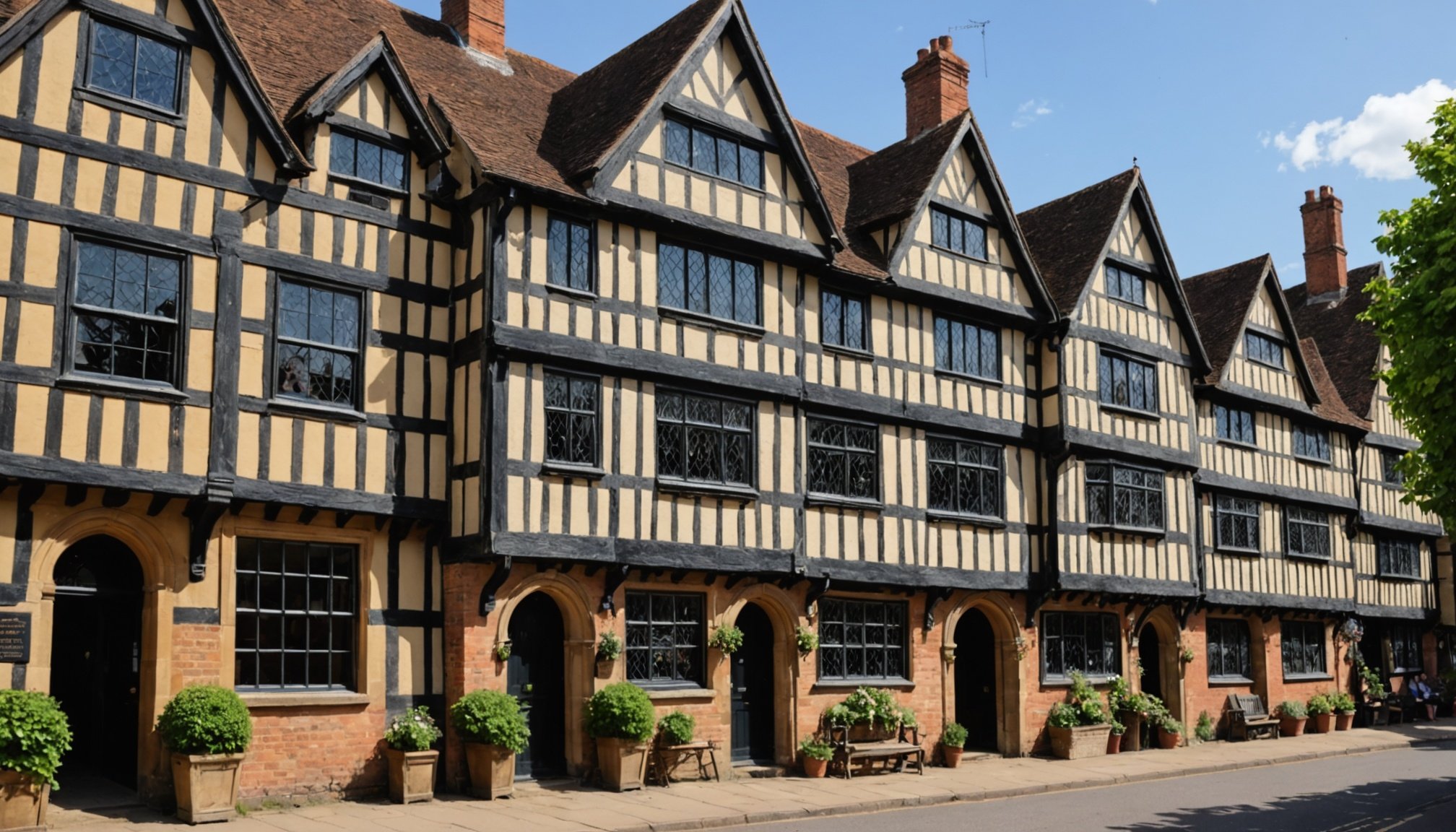Introduction to Heritage Property Management in Stratford-upon-Avon
Stratford-upon-Avon holds a unique place on the map due to its wealth of heritage properties, each narrating tales of historical and cultural significance. This picturesque town is not only famous for being the birthplace of William Shakespeare but also renowned for its heritage significance, showcasing an impressive array of period architecture.
The challenges of heritage property management in Stratford-upon-Avon are as unique as the buildings themselves. Managers are tasked with the preservation of these national treasures while addressing modern needs. Furthermore, maintaining the aesthetic and structural authenticity of these properties requires specialized knowledge and dedication. The historical accusations of changing cultural landscapes add to the complexity, posing logistical and regulatory hurdles in heritage property management.
Also to read : Navigating tenant evictions in a post-covid uk: a comprehensive guide for landlords amid changing legal dynamics
Local property managers are often at the frontline, grappling with balancing the conservation of architectural authenticity while accommodating contemporary uses. Each building holds stories that are woven into the fabric of local identity, thus from physical upkeep to involving community support, these professionals play a crucial role in preserving Stratford-upon-Avon’s historical legacy. Engaging with the community and stakeholders is vital in upholding the town’s heritage significance for future generations.
Financial Considerations in Heritage Property Management
Navigating the financial landscape of heritage properties in Stratford-upon-Avon involves intricate planning and resourcefulness. Funding options available for maintaining and restoring these historic structures are diverse yet challenging. Primarily, property managers can explore grants from national bodies like the Heritage Lottery Fund or local grants aimed at preservation. Additionally, tax reliefs and donations can serve as substantial financial aids.
In parallel : Unlocking the potential of zero-energy buildings in northern uk: benefits, hurdles, and in-depth analysis
Addressing the financial management of heritage properties, it’s crucial to consider the ongoing budgeting challenges. The sheer complexity of conserving age-old structures entails often unpredictable expenses. This includes securing materials authentic to the period and employing specialised labour. Managers face the difficult task of allocating funds effectively to ensure continued preservation without compromising structural integrity.
The economic impact of tourism cannot be overstated. Tourists flocking to Stratford-upon-Avon contribute significantly to the local economy, providing an indirect revenue stream for property management. However, this must be balanced against the preservation costs, ensuring that increased foot traffic does not degrade the properties’ historical value.
Understanding these financial dynamics is key to sustaining heritage property management, ensuring that these cultural treasures are preserved for future generations.
Legal and Regulatory Framework
Navigating the legal regulations surrounding heritage property management in Stratford-upon-Avon is a multifaceted challenge. A robust framework exists to protect these assets, with local heritage protection laws enforcing strict guidelines to maintain their integrity. The heritage property laws set by local councils and national bodies like English Heritage play a crucial role in ensuring that the cultural and architectural values of such properties are preserved.
Local council regulations often require property managers to seek permissions before making alterations to a building’s structure or appearance, ensuring changes are in line with its historical status. English Heritage provides resources and guidance but also enforces compliance through routine inspections.
Non-compliance can lead to severe consequences, including substantial fines and the potential for mandated restoration work to rectify unauthorized changes. Common legal pitfalls involve misinterpretations of these rules or insufficient documentation during renovations. It is imperative for managers to establish strong communication lines with regulatory bodies and indulge in proactive engagement with the legal aspects to avoid such issues, thereby ensuring that the property’s legacy is preserved without any legal hindrances.
Maintenance and Preservation Best Practices
Preserving heritage properties is a meticulous endeavour requiring specific maintenance strategies to uphold their historical integrity. Property managers face common challenges, such as addressing issues of structural weakening and material decay due to age. Implementing effective preservation techniques is crucial to overcome these obstacles while ensuring the longevity of these cherished buildings.
Using traditional methods and materials authentic to the property’s era is vital. These include lime plaster for walls and authentic wood treatments to retain historical character. However, integrating modern techniques without compromising historical authenticity, like discreet climate control systems, can help with preservation.
Seasonal considerations play a significant role in heritage property care. During winter, proactive approaches, like sealing drafts, can prevent moisture intrusion and subsequent damage. Regular upkeep during milder months allows for repairs before harsher weather exacerbates issues.
Ongoing care requirements involve scheduled inspections, with a focus on detecting wear and damage early. This proactive approach ensures swift remedial action, preventing more extensive repairs later. Through a balance of historical reverence and modern innovation, preservation of these cultural treasures can be effectively managed.
Community Involvement and Stakeholder Engagement
Engaging the local community and key stakeholders in heritage property management is paramount to preserving Stratford-upon-Avon’s rich cultural tapestry. The input and support of the community ensure that these heritage treasures remain vibrant parts of the local landscape. Central to this is developing strategies that amplify community support and stakeholder involvement.
Raising awareness through educational programs and interactive workshops can significantly increase local interest and participation. Collaborations with local schools and organizations encourage younger generations to appreciate and advocate for their heritage. Effective strategies often include setting up heritage advocacy groups that involve community members in decision-making and project planning.
Successful examples in Stratford-upon-Avon illustrate the benefits of this approach. Projects that invite public involvement, such as open house events or volunteer restoration days, not only foster a greater sense of ownership but also bring diverse skills and perspectives into preservation efforts. These initiatives underscore how active community engagement can lead to innovative solutions and a deeper commitment to maintaining heritage properties. By valuing community input, property managers can craft sustainable conservation practices that respect both history and contemporary needs.
Case Studies of Successful Heritage Property Management
Delving into notable heritage property case studies in Stratford-upon-Avon uncovers valuable insights into successful management practices. A prime example is the careful restoration of Hall’s Croft, once the home of Shakespeare’s daughter, where the use of authentic materials and community-funded projects played a pivotal role. The conservation of historical attributes while integrating discreet modern amenities exemplified a balanced approach.
Another significant case is the revival of the Royal Shakespeare Theatre. Innovative architectural strategies enhanced visitor experience while respecting the site’s heritage. Utilizing modern technology to preserve acoustic and structural integrity, such projects have set benchmarks in heritage management success.
These instances highlight several key strategies:
- Prioritising authenticity by sourcing period-specific materials
- Encouraging community involvement to foster a sense of ownership and financial support
- Collaborating with preservation experts for informed guidance
These lessons learned showcase the importance of best practices such as continuous stakeholder engagement and leverage of modern techniques. Emulating such approaches can provide a roadmap for managing other heritage properties. The combination of traditional reverence and modern innovation continues to uphold the cultural significance of Stratford-upon-Avon’s treasured landmarks.
Expert Opinions and Resources for Property Managers
Understanding the complexities of heritage property management requires insights from leading experts in the field. Experts like John Cattell, known for his work with English Heritage, provide invaluable perspectives on balancing conservation and modern use.
Preservation experts are essential for advising effective methods that ensure the longevity of historic buildings. They offer guidance on appropriate preservation techniques that both protect and maintain architectural integrity. These experts often collaborate on publications, offering case studies and methodologies that are key resources for managers.
Access to robust heritage management resources is crucial. Organizations such as the Institute of Historic Building Conservation (IHBC) and the Society for the Protection of Ancient Buildings (SPAB) provide critical information, training, and networking opportunities. Such resources are invaluable for property managers needing specialized knowledge in law, finance, and practical conservation techniques.
Continuing education plays a pivotal role in staying abreast of evolving best practices. Workshops, seminars, and online courses equip managers with up-to-date strategies and innovative approaches to tackle emerging challenges. Engaging with such resources ensures that property managers are well-equipped to preserve and enhance the heritage properties under their care effectively.






